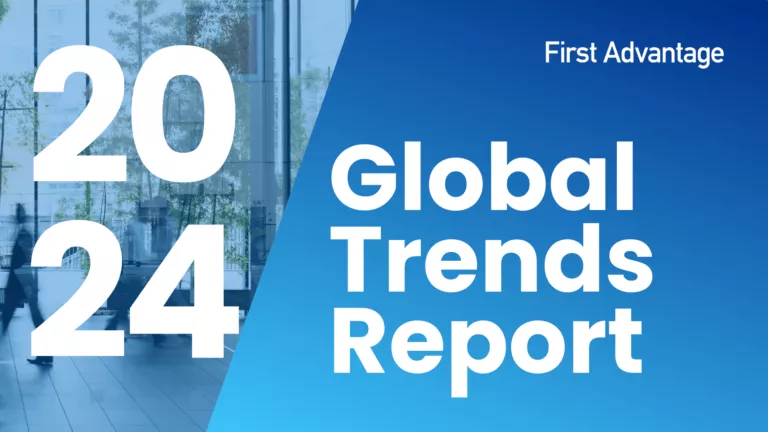Work Opportunity Tax Credit: A Helping Hand for Job Seekers
There’s no question that employers are constantly on the lookout for that perfectly qualified candidate — one with the stellar resume, the glowing recommendations, the power suit, and a top-notch education, with years of experience. However, a sometimes overlooked U.S. business credit — the work opportunity tax credit — financially encourages companies to hire employees from disadvantaged or underrepresented groups to transition them from economic dependence to self-sufficiency.
The idea of a tax credit for employing target groups dates back to the Revenue Act of 1978, which introduced an employer tax credit to assist those facing systematic barriers to employment. Since then, the Small Business Job Protection Act of 1996, the Taxpayer Relief Act of 1997, the Ticket to Work and Work Incentives Improvement Act of 1999, the Job Creation and Worker Assistance Act of 2002, the Vow to Hire Heroes Act of 2011, and the Protecting Americans From Tax Hikes (PATH) Act of 2015 have all helped secure and enhance this incentive program.
The work opportunity tax credit was designed to assist individuals facing barriers to employment. Great workers come from many backgrounds, but unemployment still runs rampant among target groups today because members are often disabled, lacking in job skills, or dependent on government assistance. In many cases, the stats tell the story. Some urban and rural areas experience a higher unemployment rate than the rest of the country. For example, although U.S. unemployment was reported by the Bureau of Labor Statistics to be 4.4 percent in April this year, El Centro, an urban area in the Imperial Valley of California, reported an unemployment rate of more than 20 percent. Unemployment statistics also vary by age, since the current unemployment rate among 16- to 19-year-olds is almost 15 percent versus the overall unemployment rate of 4.4 percent.
In 2016 businesses received $1.7 billion from the work opportunity tax credit. To take advantage of the credit, the employer must identify potentially eligible individuals during the hiring process and submit an application for a credit certification with a designated local agency charged with administering the program. The job applicant answers some simple questions in the hire screening process, and responses from potentially eligible applicants are used to populate the employer application for the credit. The idea is that given two equally qualified job candidates, the employer will hire the candidate with a disadvantaged background, helping that candidate obtain needed job skills and experience. The credit targets the following groups.
TANF Recipients
Temporary Assistance for Needy Families (TANF), administered by the Department of Health and Human Services, Office of Family Assistance, helps needy families achieve self-sufficiency. Recipients receive financial assistance to pay for food, shelter, utilities, and other nonmedical expenses. Individual states determine the eligibility criteria, as well as benefits or services. As of 2016, there were 2.7 million TANF recipients in the United States. To qualify for the credit, long-term TANF recipients must have:
- received TANF benefits for at least 18 consecutive months ending on the hiring date;
- received TANF benefits for at least 18 consecutive or nonconsecutive months after August 5, 1997, and have a hiring date that is not more than two years after the end of the earliest 18-month period after August 5, 1997; or
- stopped being eligible for TANF payments during the past two years because a federal or state law limited the maximum time those payments could be made.
Short-term TANF recipients qualify for this target group if the individual is a member of a family that received TANF benefits for any nine month period during the 18-month period ending on the hiring date.
SNAP Recipients
The Supplemental Nutrition Assistance Program (SNAP) offers nutrition assistance to low-income individuals and families. The resource and income thresholds for eligibility vary by state, and the benefits differ depending on the number of persons in the household. Qualification requires that the individual be:
- 18 to 39 years old; and
- a member of a family that received SNAP for:
- the six months ending on the hiring date; or
- at least three of the five months ending on the hiring date.
Veterans
Veterans make up 6.7 percent of the labor force and 4.4 percent of the unemployed. As of 2015, 4.9 percent of credit certifications were in the unemployed veteran categories. For purposes of the work opportunity tax credit program, a veteran is an individual who served on active duty with the U.S. Armed Forces for at least 180 days or was discharged or released from active duty for a service-connected disability. In either case, the veteran must have no period of active duty of over 90 days ending within 60 days of hire.
Other Categories
The work opportunity tax credit program covers designated community residents living in an empowerment zone or a rural renewal county (an area outside a metropolitan statistical area that suffered net employment loss during the 1990s). Eligible persons from this target group must be aged 18 to 39, or aged 16 to 17 and newly employed for summer work between May 1 and September 15. Also included are vocational rehabilitation referrals (individuals with disabilities who have completed or are completing a rehabilitative services plan from a state-certified agency, the Department of Veterans Affairs, or a Ticket to Work employment network), ex-felons who are hired within one year of conviction, and individuals receiving Supplemental Security Income for any month ending within the 60-day period ending on the hiring date.
Last are qualified long-term unemployment recipients hired after December 31, 2015. That category was added by the PATH Act in December 2015. Eligible individuals are certified by the designated local agency as those who have been unemployed for at least 27 weeks and received unemployment under state or federal law at some point during that time. Currently, almost a quarter of the unemployed are long-term unemployed, and they make up about 1 percent of the total labor force.
Financially Speaking
So where does the credit come in? While it’s encouraging to know that your company is diversifying its workforce and helping individuals move from dependence to self-sufficiency, the question of how much tax credit your company can receive remains.
The credit is calculated as a percentage of wages paid to certified employees who work at least 120 hours in the first year of employment. The percentage varies depending on how long the employer retains the employee, and the amount of wages applied is capped based on the category. The employer recognizes a credit of 25 percent of first-year wages for certified employees who meet the 120-hour threshold and 40 percent of first-year wages for those who work at least 400 hours during the first year of employment. For wages paid to certified long-term TANF recipients, the employer receives 40 percent of first-year wages and an additional credit equal to 50 percent of second-year wages paid to the certified employee.
Generally, applicable wages are capped at $6,000, but some veteran categories reflect higher values. For instance, the wage cap for long-term unemployed veterans with a service-connected disability is $24,000, resulting in a maximum credit of $9,600. Overall, the credit realized per certified employee usually ranges from $1,200 to $1,500, depending on the makeup of the hiring base and industry average wages.
Administering the Work Opportunity Tax Credit
And now to address the paperwork. Any private sector business hiring a new employee from a target group and any tax-exempt organization hiring new employees from the work opportunity tax credit veteran target group are eligible. The best practice is to incorporate credit screening within the recruiting and hiring process. The job applicant answers some simple questions, executes the application form, and in some cases, provides limited documentation, such as a driver’s license.
Employers must screen applicants on or before making an offer of employment and may use background screening service providers. Work opportunity tax credit certification questions can be integrated into an applicant tracking system if using background screening technology. The information for the background check and the credit application is then collected in one application process.
The certification process has greatly improved in both efficiency and accuracy over the last three to five years because of increased automation by the designated local agencies. Thirty-eight states offer some form of automation, allowing electronic submission or transmitting an electronic response in lieu of the formerly all-paper process. Seventeen states now accept, process, and return certifications in a fully automated electronic loop, resulting in nearly instantaneous verification of the SNAP and TANF categories. Today, in fully automated states, nearly 80 percent of applications can be verified immediately, while the remaining 20 percent of determinations are received in approximately six to nine months. The average turnaround time to receive an application determination from manually processing states ranges from six months to two years.
Integrating applicant screening and work opportunity tax credit certification questions into one application process can increase compliance, enhance the applicant experience, and improve the accuracy and efficiency of screening and applying for credit certification.
The Future of the Credit
While the benefits of the work opportunity tax credit are obvious, the program is authorized only through 2019. Throughout its 20-year history, the program has been allowed to lapse several times for periods of up to a year, but each time it has been reinstated retroactively, allowing businesses and disadvantaged job applicants to continue to benefit. There is support for the program on both sides of the aisle in Congress, and in the Senate particularly, because the program was shown in a recent study to save an estimated $184 billion in government benefits expenditures over 10 years. In the context of tax reform, this substantial return on investment and proven benefit to our disadvantaged populations weigh in favor of making the credit permanent.
Credit certification reduces government spending while helping those from target groups gain job skills, stay in the employment market, and break free from reliance on public assistance. It is difficult to imagine a program better suited to encouraging business growth and at the same time assisting disadvantaged members of a community.

 京公网安备 11010502052956号
京公网安备 11010502052956号

